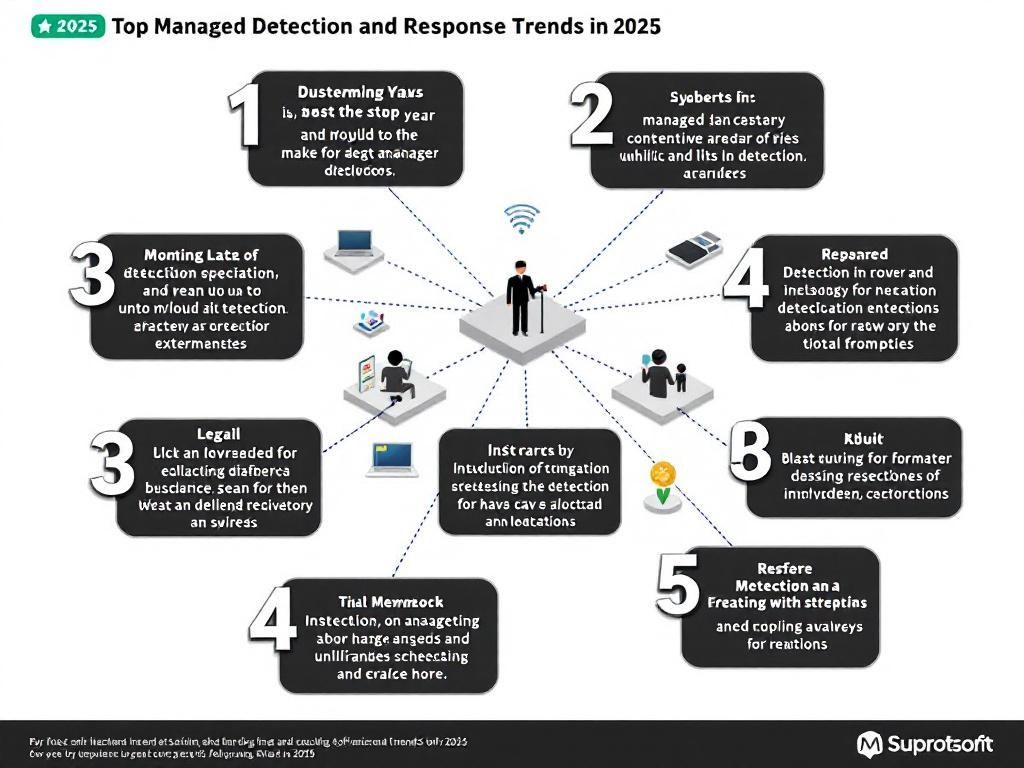Ultimate Guide to Corporate Wireless Security 2025
Explore the ultimate guide to corporate wireless security for 2025. Discover best practices, tips, and strategies to safeguard your business's wireless networks.

Table of Contents
Ultimate Guide to Corporate Wireless Security 2025
As we step into 2025, the landscape of corporate wireless security is evolving rapidly, driven by technological advancements, increased connectivity, and the ever-growing number of cyber threats. This ultimate guide aims to provide businesses with comprehensive insights into securing their wireless networks effectively.
1. Understanding Wireless Security
Wireless security refers to the measures and protocols implemented to protect a wireless network and ensure the confidentiality, integrity, and availability of data transmitted over these networks. With more devices connecting to wireless networks, from laptops to IoT devices, securing these connections is more critical than ever.
2. Common Wireless Security Threats
Before diving into solutions, it is essential to understand the prevalent threats that can compromise wireless security:
- Unauthorized Access: Hackers can gain access to a network if security measures are weak.
- Data Interception: Sensitive data transmitted over wireless networks can be intercepted if not encrypted properly.
- Denial of Service (DoS) Attacks: Attackers can overload a network with traffic, rendering it unusable.
- Man-in-the-Middle Attacks: These involve an attacker intercepting communication between two parties.
- Rogue Access Points: Unauthorized access points can be set up to capture data from unsuspecting users.
3. Key Wireless Security Protocols
To mitigate these threats, organizations should implement robust wireless security protocols:
| Protocol | Description | Security Level |
|---|---|---|
| WEP (Wired Equivalent Privacy) | An outdated protocol that encrypts wireless traffic but is easily compromised. | Poor |
| WPA (Wi-Fi Protected Access) | A significant improvement over WEP, providing better encryption and security features. | Good |
| WPA2 | Utilizes AES encryption and is currently the standard for securing wireless networks. | Very Good |
| WPA3 | The latest standard, offering enhanced protection against brute-force attacks and better security for open networks. | Excellent |
4. Best Practices for Corporate Wireless Security
Here are some best practices companies should adopt to ensure robust wireless security:
- Use Strong Encryption: Always use WPA3 or WPA2 protocols to secure wireless connections.
- Change Default Credentials: Ensure all devices have unique, strong passwords and do not rely on factory defaults.
- Set Up a Guest Network: Isolate guest users from the main corporate network to prevent unauthorized access.
- Regular Software Updates: Keep all routers, access points, and devices updated to protect against vulnerabilities.
- Network Monitoring: Implement tools to monitor network traffic for suspicious activity.
- Limit Access: Use MAC address filtering to restrict which devices can connect to the network.
- Educate Employees: Conduct regular training sessions on wireless security awareness and best practices.
5. Emerging Technologies in Wireless Security
As technology evolves, so do the methods to secure wireless networks. Here are some emerging technologies in wireless security for 2025:
- Artificial Intelligence (AI): AI can analyze vast amounts of data for unusual patterns, helping to identify potential security breaches before they happen.
- Machine Learning: Similar to AI, machine learning models can adapt and improve security measures based on historical data.
- Zero Trust Architecture: This security model assumes that threats could be both outside and inside the network, prompting organizations to implement strict access controls.
- Blockchain Technology: Provides tamper-proof data sharing which can improve the integrity of wireless transactions.
6. Regulatory Compliance and Wireless Security
Many businesses must adhere to strict regulatory frameworks concerning data protection and security. Some key regulations affecting wireless security include:
- GDPR (General Data Protection Regulation): Mandates strong measures to protect personal data.
- HIPAA (Health Insurance Portability and Accountability Act): Imposes strict regulations for protecting patient data in the healthcare industry.
- PCI-DSS (Payment Card Industry Data Security Standard): Requires businesses that handle credit cards to secure cardholder data.
7. Incident Response Planning
No matter how secure your wireless network is, incidents may still occur. Developing an incident response plan is crucial. The steps include:
- Preparation: Establish a security policy and prepare the team.
- Identification: Recognize and identify a security incident.
- Containment: Limit the damage by isolating affected systems.
- Eradication: Remove the cause of the incident and any vulnerabilities.
- Recovery: Restore systems to normal operations.
- Lessons Learned: Post-incident analysis to improve future response strategies.
8. Future Trends in Wireless Security
As we look to the future, several trends in wireless security are set to shape the way businesses protect their networks:
- Increased Adoption of 5G: The rollout of 5G networks will necessitate new security protocols and tools.
- Rise of IoT Security: With more devices connecting to networks, securing IoT will be a significant focus.
- Focus on Privacy: As consumers become more aware of data breaches, privacy-focused security measures will become crucial.
- Greater Integration of Security Solutions: Organizations will seek integrated security solutions that provide comprehensive protection.
9. Conclusion
As we progress further into 2025, corporate wireless security must remain a top priority for organizations. By understanding the threats, implementing best practices, leveraging emerging technologies, and maintaining compliance with regulations, businesses can protect their wireless networks from the ever-evolving landscape of cyber threats. Being proactive and prepared is the best way to ensure the security of sensitive information transmitted over wireless networks.
FAQ
What is corporate wireless security and why is it important in 2025?
Corporate wireless security refers to the measures and protocols implemented to protect an organization’s wireless networks from unauthorized access and cyber threats. In 2025, with the rise of remote work and increased reliance on wireless technologies, it is crucial to safeguard sensitive data and maintain operational integrity.
What are the key components of a robust corporate wireless security strategy?
A robust corporate wireless security strategy includes strong encryption protocols, secure authentication methods, regular network monitoring, employee training on security practices, and the implementation of firewalls and intrusion detection systems.
How can businesses protect their wireless networks from unauthorized access?
Businesses can protect their wireless networks by using strong passwords, enabling WPA3 encryption, implementing MAC address filtering, and regularly updating firmware on routers and access points.
What role does employee training play in corporate wireless security?
Employee training is essential in corporate wireless security as it raises awareness about potential threats, teaches safe practices for using wireless networks, and helps staff recognize phishing attempts and other cyber risks.
What are the latest trends in corporate wireless security for 2025?
The latest trends in corporate wireless security for 2025 include the adoption of Zero Trust architecture, increased use of AI and machine learning for threat detection, the implementation of secure access service edge (SASE) models, and a focus on integrating IoT security measures.
How often should businesses update their wireless security protocols?
Businesses should review and update their wireless security protocols at least annually, or more frequently if there are significant changes in technology, emerging threats, or after a security incident.








